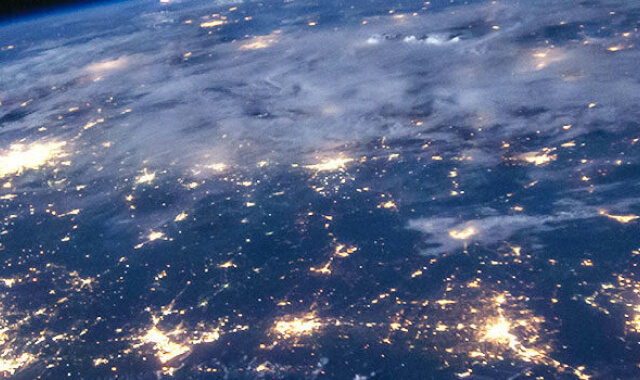The term “Global Social Witnessing” was first introduced at the Celebrate Life Festival 2017. This came about against the background of the widening gap between what is possible from the potential of the individual and humanity, and what is realized from it.
Looking at the conflicts in the world and the destructive developments, one gets the impression that humanity seems to be learning very slowly from the past. Why this is so has long been a question that is close to my heart and that is incorporated into our work.
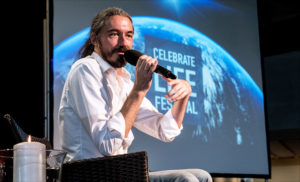 Our realization is that collective traumas are at the root of most conflicts, mostly unrecognized and often unconscious. Adequate healing and peace-building is possible only if this is included. First and foremost, this requires the ability to gain a precise and comprehensive picture of what is happening. We call this process of insight, Global Social Witnessing. It is the ability to feel and relate to the cultural process. It’s an awareness that the social body is developing through us.
Our realization is that collective traumas are at the root of most conflicts, mostly unrecognized and often unconscious. Adequate healing and peace-building is possible only if this is included. First and foremost, this requires the ability to gain a precise and comprehensive picture of what is happening. We call this process of insight, Global Social Witnessing. It is the ability to feel and relate to the cultural process. It’s an awareness that the social body is developing through us.
It also encompasses a vision of what can develop and methods that promote the way there.
We call the ability of a person or a system to have awareness of one’s own current life process conscious experience. The ability to reflect, the self-critical examination of motivations and actions, the ability to change and a sense of humour are just a few of the functions of this. When a living system (an individual, an organization, a culture) becomes aware of its own process, an inclusive and integrative or integral way of life is the expression of it.
Global Social Witnessing deals with the awareness of the collective subject of it’s own process. This awareness begins with the fact that first the information of the processes of the system is mapped within itself.
The Individual Level
A human being who can depict the inner life of another human being in itself develops the ability of compassion.
 A human being who can depict the inner life of another human being in itself develops the ability of compassion. Compassion is not a purely cognitive process, but the ability to reproduce the composition of the physical, emotional and mental experience of another. The inner picture of the experience of another person in me creates real compassion, and thus a radius of action, which is the prerequisite for truly healing and potential for promoting action. This is the basis of Response-ability.
A human being who can depict the inner life of another human being in itself develops the ability of compassion. Compassion is not a purely cognitive process, but the ability to reproduce the composition of the physical, emotional and mental experience of another. The inner picture of the experience of another person in me creates real compassion, and thus a radius of action, which is the prerequisite for truly healing and potential for promoting action. This is the basis of Response-ability.
The Collective Level
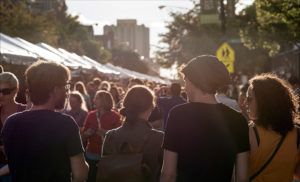 The same applies to the collective context. If we can map in ourselves the processes that happen in society, we become an adult and integrated citizen of a nation or culture. This means that only when I can create a physical, emotional and mental representation of events within myself can I really relate to them. This relationship, in turn, allows me to come to an appropriate (not reactive), creative action. The more I have to hide or dissociate myself from the events and processes of the culture in which I live, the less I can come to an adequate response and action to them.
The same applies to the collective context. If we can map in ourselves the processes that happen in society, we become an adult and integrated citizen of a nation or culture. This means that only when I can create a physical, emotional and mental representation of events within myself can I really relate to them. This relationship, in turn, allows me to come to an appropriate (not reactive), creative action. The more I have to hide or dissociate myself from the events and processes of the culture in which I live, the less I can come to an adequate response and action to them.
The Impact of Trauma
We see this again and again when trauma, which is a fragmentation in the nervous system, leads to fragmented and fragmenting actions. For example, when a terrorist attack occurs, many people feel overwhelmed and turn away.
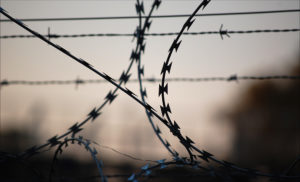 This can lead to reactive actions. These usually lead to further fragmentation and tension in the system, which can grow into political tensions up to the international level. Reactions to traumatizing or polarizing actions are usually answered by reactions that originate at the same level. A circulus vitiosus is formed, which rotates in a circle. Actions based on trauma activity re-create new traumatisation.
This can lead to reactive actions. These usually lead to further fragmentation and tension in the system, which can grow into political tensions up to the international level. Reactions to traumatizing or polarizing actions are usually answered by reactions that originate at the same level. A circulus vitiosus is formed, which rotates in a circle. Actions based on trauma activity re-create new traumatisation.
It first needs a new understanding of the underlying function of the relationship, of the ability to connect the inside and outside with each other and to map them into each other. Pre-traumatisation prevents or complicates this. This is why subsequent traumas often cannot be depicted in culture, society and individuals without the participants dissociating themselves.
The Question of Guilt
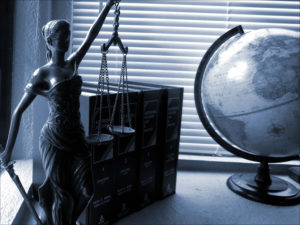 At first glance, it looks as if the culprits in an event such as an act of terrorism or an abuse scandal are those who have committed offences under the law and who are being tried. A few are the culprits, and the rest of the community can feel relieved and innocent. This may be right on a certain level, but it is only part of the truth. If you take a closer look, you will see that it is a phenomenon of society as a whole. Because the less we can reproduce in ourselves the events and news that we hear and read, the more insensitive the social body is and cannot reproduce its own process as a system in itself. Thus the system (i.e. society) has lost its own ability to relate and loses regenerative power, immune strength and compassion. The witness-consciousness of culture (the power to witness one’s own life process) often collapses here, and the process is no longer conscious of itself. As a result, unconscious actions determine or at least deeply influence the process.
At first glance, it looks as if the culprits in an event such as an act of terrorism or an abuse scandal are those who have committed offences under the law and who are being tried. A few are the culprits, and the rest of the community can feel relieved and innocent. This may be right on a certain level, but it is only part of the truth. If you take a closer look, you will see that it is a phenomenon of society as a whole. Because the less we can reproduce in ourselves the events and news that we hear and read, the more insensitive the social body is and cannot reproduce its own process as a system in itself. Thus the system (i.e. society) has lost its own ability to relate and loses regenerative power, immune strength and compassion. The witness-consciousness of culture (the power to witness one’s own life process) often collapses here, and the process is no longer conscious of itself. As a result, unconscious actions determine or at least deeply influence the process.
Getting to Know Our Limits
The practice of Global Social Witnessing is a deep awareness practice and maturation dedicated to the integration of collective traumatization and the resulting separateness that many people experience.
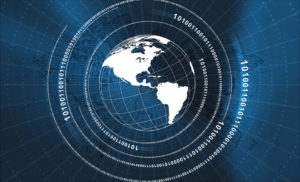 Through a conscious individual practice and a We-practice, we can venture back to the unfelt and not experienced parts of the cultural experience. We can learn where our personal and collective limits lie, how to really experience challenging events, and thus be a real witness of our time. This is a person who can experience what they experience in their environment emotionally, cognitively and in a related way. All these elements are the building blocks of presence and being fully here. At first, it is not a question of all of us being able to do this at once. It is first about finding out where the limits of our ability to experience lie. Only then can we begin to expand them.
Through a conscious individual practice and a We-practice, we can venture back to the unfelt and not experienced parts of the cultural experience. We can learn where our personal and collective limits lie, how to really experience challenging events, and thus be a real witness of our time. This is a person who can experience what they experience in their environment emotionally, cognitively and in a related way. All these elements are the building blocks of presence and being fully here. At first, it is not a question of all of us being able to do this at once. It is first about finding out where the limits of our ability to experience lie. Only then can we begin to expand them.
It Begins With Ourselves
Global Social Witnessing begins with each individual. It is the ability to relate to processes, incidents and situations that happen in our culture. But in order to relate to myself, I need to have the ability to adequately map my outside into my inside. This creates resonance – based on resonance ability, which is a natural function of the nervous system when it is open and mature.
Connectedness and Separateness
Traumatization reduces our ability to resonate, and therefore our capacity to map the outside to our inside, and to respond to the outside from this inner mapping. This is the basis of connectedness, and for our awareness of a developing, connected world.
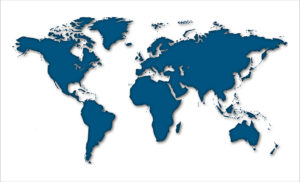 For many people, at least at certain times, a subjective experience is a separate experience. The subjective self experiences itself feeling separate or isolated. In this separation, the individual can only partially or barely depict the cultural process within themself.
For many people, at least at certain times, a subjective experience is a separate experience. The subjective self experiences itself feeling separate or isolated. In this separation, the individual can only partially or barely depict the cultural process within themself.
This reduces the ability of Global Social Witnessing. The inner space (the inner world of experience) has only mapped a fraction of the process that really takes place. The world that is experienced and perceived is much more reduced than what actually takes place. Massive dissociation is the basis of the frequently observed indifference, and thus often lacks the basis for an impulse for action that arises from connectedness. What emerges are reactive patterns that usually originate from the conditioning of the past and continue the fragmentation that already exists. More and more of the same creates itself.
Through a consciousness practice like Global Social Witnessing this vicious circle can be broken.
Global Social Witnessing_Lab at the University of Witten Herdecke in Germany from March 30 to April 2, 2020 (with Thomas Hübl and many other speakers) – Read more here
